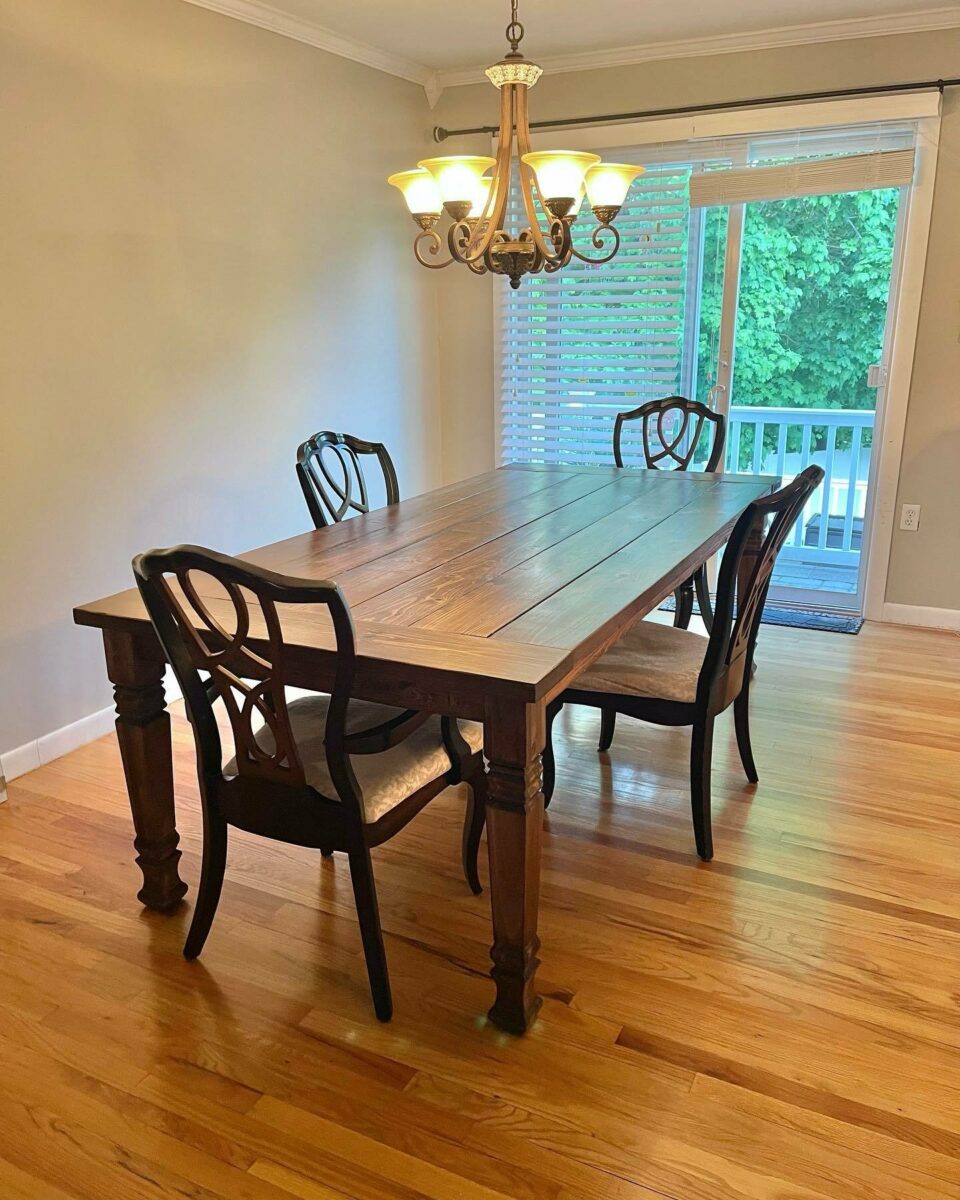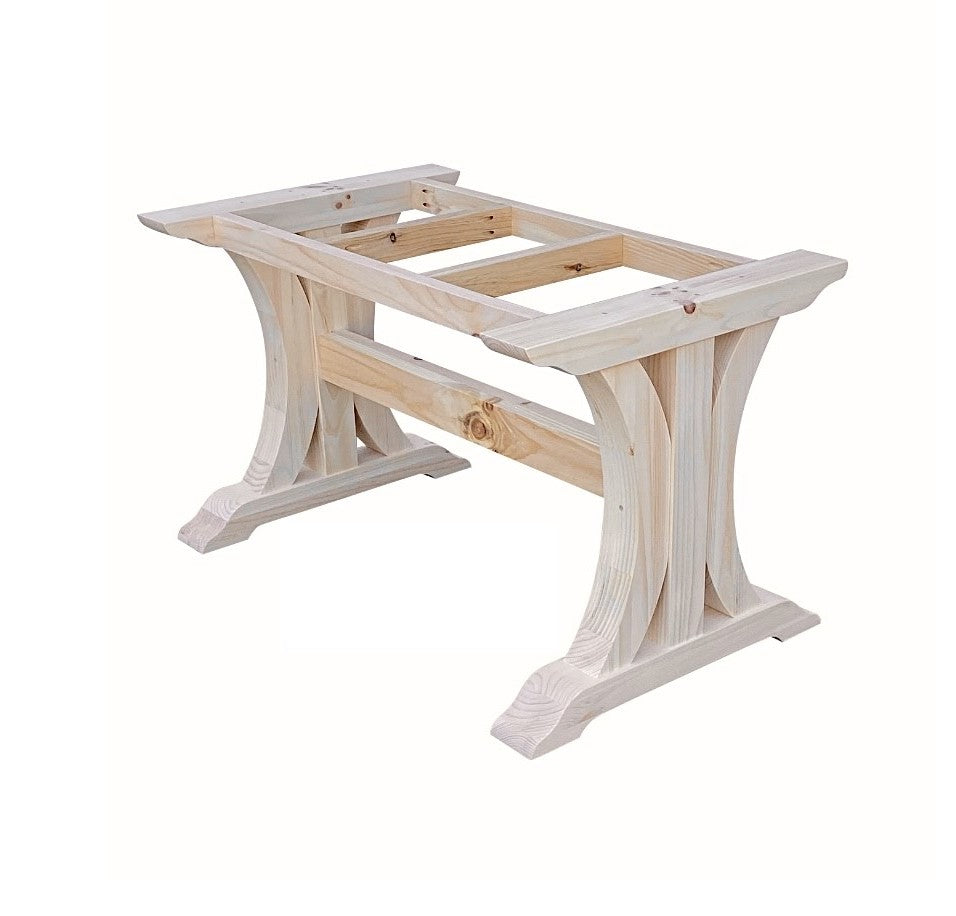Expert Tips for Setting Up Dining-room Table Legs for Optimum Stability
When it pertains to installing dining area table legs, accomplishing optimum security is vital for both performance and aesthetic appeals. The process begins with selecting the right products and equipment, adhered to by meticulous positioning and factor to consider of weight distribution. Each step plays an important duty in guaranteeing that the ended up product holds up against everyday use without jeopardizing safety or layout stability. Comprehending the subtleties of these elements can significantly affect the overall outcome. What certain techniques can enhance stability even further?
Pick the Right Legs
When choosing the appropriate legs for your eating area table, it is important to take into consideration both capability and aesthetics. The legs you choose will considerably influence the overall design and stability of the table. First, evaluate the table's meant use; if you expect regular gatherings, stronger legs, such as those made from strong wood or metal, might be much more suitable, as they provide enhanced toughness and assistance.
Next, think about the elevation and style of the legs in relation to the tabletop. Conventional table commonly range from 28 to 30 inches in height, so guarantee the legs align with this criterion for convenience. The style of the legs ought to enhance the style of the table top-- whether it be modern, rustic, or standard. For example, conical legs can add a contemporary touch, while turned legs could communicate an extra traditional aesthetic.

Select Appropriate Hardware
Just how can the right equipment improve the security and durability of your dining-room table? The selection of proper hardware is vital to making certain that the legs of your table are safely affixed and able to hold up against regular use. Top quality screws, screws, and brackets offer the needed stamina to sustain the weight of the table, along with any type of extra tons positioned upon it throughout dishes or celebrations.
When selecting screws, choose for those made from resilient materials such as stainless-steel or brass, which stand up to rust and preserve integrity with time. The size of the screws is just as important; they need to pass through deeply into the table's framework without compromising integrity. For bolted connections, take into consideration using lock washing machines to avoid loosening because of resonance or motion.
Furthermore, making use of corner brackets can include added assistance, specifically for larger tables or those with heavier tops. These braces disperse weight evenly and assist maintain the table's shape. Making sure that the equipment you select is ideal for the certain products of your table will certainly better improve its general stability and durability, enabling you to enjoy your eating experience for several years to find.
Ensure Correct Placement
Appropriate positioning of eating room table legs is crucial for both visual allure and useful security. To achieve optimal positioning, start by determining the distance from the table's corners to the leg add-on factors.
Make use of a level during installation to confirm that each leg is perpendicular to the table top. This step is vital, as also minor inconsistencies can rise into significant security concerns in time. It is a good idea to mark the wanted leg positions on the bottom of the table with a pencil or concealing tape prior to securing them. This method serves as a visual overview, permitting for adjustments as needed.
Moreover, verify the alignment after the preliminary screws are tightened, as modifications might be essential prior to totally safeguarding the equipment. By focusing on appropriate alignment, you not only improve the table's general design but additionally guarantee that it remains practical and stable for several years ahead.

Consider Weight Circulation
After making sure correct alignment of the dining room table legs, it is very important to consider weight distribution to enhance stability and functionality. dining room table legs. Proper weight distribution is crucial in avoiding wobbling and making certain that the table can sustain its desired lots without danger of tipping or falling down
When positioning the legs, ensure they are put at equivalent ranges from the center of the table to equally disperse the weight across the structure. Consider the weight of the table top and any items that will regularly hinge on it, such as tabletop home appliances or ornamental items. Tables with much heavier surfaces ought to ideally have legs positioned closer to the edges, as this makes the most of the base of support and decreases the threat of instability.
In addition, if the table is planned for use in a high-traffic area, take into consideration making use of heavier products for the legs or right here adding maintaining components, such as cross-bracing or a lower rack - dining room table legs. These adjustments can aid keep balance and prevent changing during use. Eventually, a well-considered weight distribution strategy will dramatically improve the table's overall efficiency, guaranteeing it stays a eye-catching and functional centerpiece for your eating area
Examination Stability Prior To Usage
Evaluating the stability of the eating space table prior to use is an important step that must not be ignored. If the table shows instability, recognize the legs or joints that may call for modification.
Next, inspect that all bolts and screws are tightened up properly. Loosened links can cause instability and possible damages with time. If essential, make use of wood adhesive on joints to improve security, guaranteeing to enable adequate drying out time.

Final Thought
To conclude, the installation of dining-room table legs needs mindful factor to consider of materials, alignment, weight, and equipment circulation to attain optimum stability. By selecting high-quality fasteners and durable legs, making sure specific placement, and dispersing weight evenly, the structural stability of the table can be considerably improved. Conducting a stability test before routine usage further guarantees that the table will withstand daily stress, thereby providing a risk-free and reliable eating experience.
When it wikipedia reference comes to mounting eating area table legs, achieving optimum stability is critical for both my latest blog post capability and visual appeals. The legs you pick will significantly influence the general layout and stability of the table (dining room table legs). Conventional eating tables commonly range from 28 to 30 inches in height, so make sure the legs straighten with this standard for comfort.Correct positioning of dining area table legs is crucial for both aesthetic charm and functional security.In verdict, the installment of eating area table legs calls for cautious consideration of products, equipment, weight, and alignment circulation to attain optimum security